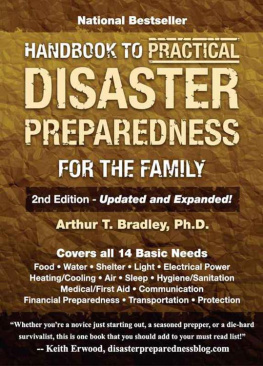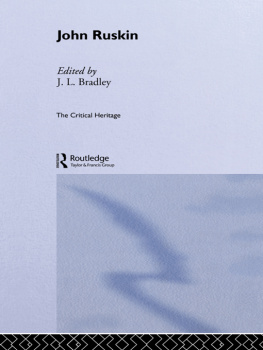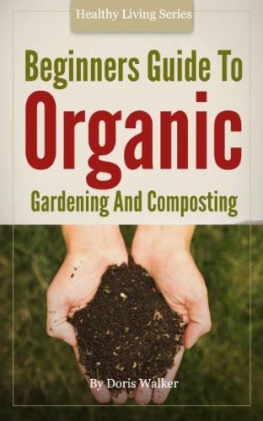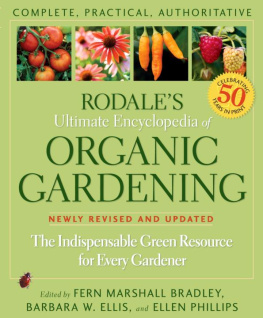
Mention of specific companies, organizations, or authorities in this book does not imply endorsement by the author or publisher, nor does mention of specific companies, organizations, or authorities imply that they endorse this book, its author, or the publisher.
Internet addresses and phone numbers given in this book were accurate at the time it went to press.
First published in hardcover by Rodale Inc. in 1959.
First published in paperback by Rodale Inc. in 2009.
2017 by Rodale Inc.
All rights reserved. No part of this publication may be reproduced or transmitted in any form or by any means, electronic or mechanical, including photocopying, recording, or any other information storage and retrieval system, without the written permission of the publisher.
Illustrations by Michael Gellatly
Note: Page numbers listed below refer to the print edition of this book.
Photographs pages 1, 41, 182, 325, 333, 363, 390, 500, 611, 632 istockphoto; 206, 234, 315, 405, 520, 577 Rodale Images; 101, 174, 380 Robert Cardillo; 280 Mitch Mandel/Rodale Images
Book design by Christina Gaugler
Library of Congress Cataloging-in-Publication Data is on file with the publisher.
ISBN 978-1-63565-098-3 paperback
ISBN 978-1-63565-099-0 e-book

We inspire health, healing, happiness, and love in the world.
Starting with you.
RodaleBooks.com
RodaleWellness.com
To Robert Rodale, whose ideas and spirit live on in all of our gardens, and to the organic gardeners and farmers who share his vision and continue his work.

Contents
Introduction
Well-worn copies of The Encyclopedia of Organic Gardening, edited by J. I. Rodale, are part of gardening book collections in libraries, homes, and garden sheds across North America. In the decades since this remarkable book was published in 1959, organic gardening has changed from a fringe movement to mainstream. True to the vision of J. I. and Robert Rodale, organic gardening is now widely recognized as the safest, most economical, and most practical method for home gardeners.
In 1989, Rodales garden book editors launched a project to rejuvenate the encyclopedia, with the goal of creating a resource that would reflect gardeners wishes to use organic methods and to learn about breakthroughs in organic pest control. This new encyclopedia would include not only raising food crops but also maintaining perennials, annuals, trees, shrubs, and lawns without chemicals.
To achieve that vision, ideas and input were sought from many gardeners, writers, and editors. Robert Rodale also lent his unique insights, one of his last contributions to a Rodale gardening book before his death. Then a broad range of garden experts and writers was enlisted to draft entries in their areas of interest. A team of editors carefully blended and refined their work to create Rodales All-New Encyclopedia of Organic Gardening.
In 2007, Rodale realized that it was time to update this vital reference book yet again, and engaged three members of the 1992 editions editorial teamBarbara W. Ellis, Ellen Phillips, and Fern Marshall Bradley. These editors (dedicated organic gardeners all) reread and discussed the entire book, painstakingly choosing outdated entries to remove, adding new entries, and updating plant and organic pest control information throughout. And in light of the vital issues faced by gardeners in an era of climate change and declining natural resources, they added an all-new section on gardening sustainably.
Now a decade later, this essential gardening guide has been updated once more. Information included in the previous editions green gardening section is now expanded into new entries on topics such as Green Roofs, Invasive Plants, Pollinators, Rain Barrels, and Water Conservation, reflecting issues and interests that have become mainstream, along with organic practices and growing concern for the environment. Plant names have been updated to include the most current determinations made by botanists while also retaining the names most widely used by growers and retail nurseries. Since the previous editions, some popular landscape plants have fallen out of favor as their aggressive habits or other undesirable features have come to light. Many of these remain in this encyclopedia, because they continue to be widely available, but with caveats about their use and suggestions for less troublesome alternatives.
Trends in garden design change as prevailing tastes shift from naturalistic to formal or from modern to traditional. Plants go in and out of fashion, as well. New cultivars are introduced andif they are goodbecome widely grown. Historians and fans of beloved heirlooms continue to perpetuate and preserve the plants grown decades, or even centuries, ago. New products for controlling pests or extending the season or cultivating the soil become available. Yet much of the fundamental practice of gardening remains as it was in 1959 when J. I. Rodale published the first edition of this encyclopedia. Plants still need light and water and nutrients. Gardeners still place seeds into the soil and anticipate the moment when those seeds will reward their efforts with beautiful flowers, luscious fruits, crisp vegetables, or welcoming shade. From compost-making to watering, the basics of organic gardening are evergreen and worth incorporating in your own garden practices. The goal with this revised edition, as for all previous editions, was a comprehensive, easy-to-use book that provides practical information on the entire realm of organic gardening.
How to Use This Book
This book is organized to reflect the way you garden. Weve grouped information into useful, complete entries that will provide all you need to know about a particular topic, rather than spreading out facts in thousands of short entries. For example, the instructions you need to plan, plant, and care for a vegetable garden are in one entry: Vegetable Gardening. The Compost entry tel ls you everything you need to know to make and use compost (and compost tea). Entries on Annuals, Perennials, and Trees describe how to get started, how to use these plants in your landscape, and how to keep them flourishing. Each of these entries includes lists of specific plants for particular environmental conditions and uses.
Individual food crops and ornamentals entries provide additional specialized information. For example, the Tomato entry offers lots of tips for growing the biggest, best, earliest tomatoes. Dozens of special entriesincluding Cut Flower Gardening, Edible Landscaping, Habitat Gardening, Rock Gardens, Weather and Weather Lore, and Wildlife Gardeningwill stimulate your gardening imagination and curiosity.
How to Find It
















